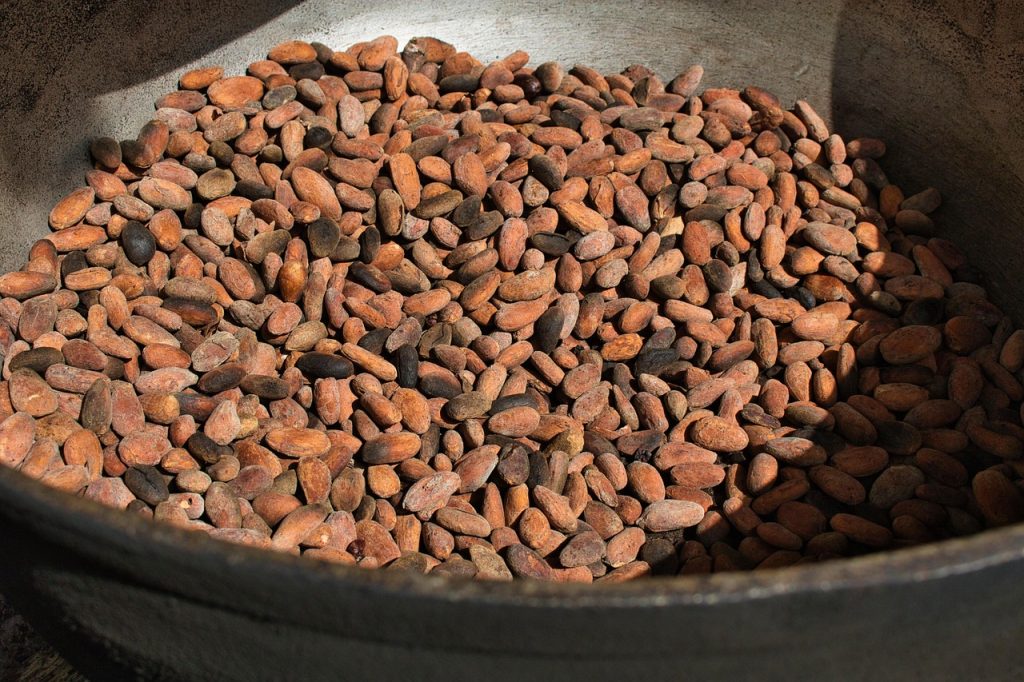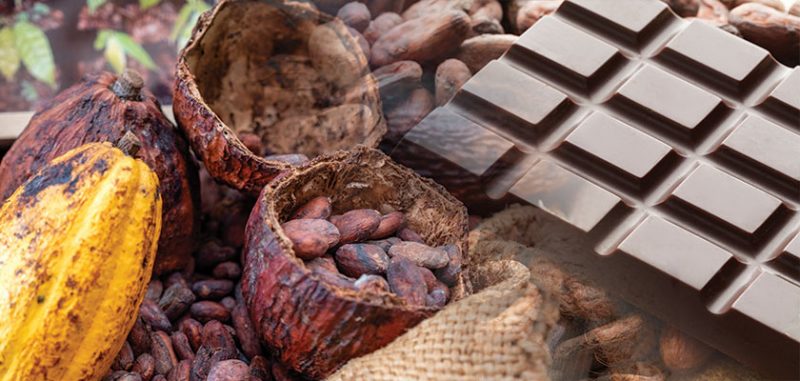Table of Contents
Just as the chocolate you craft relies on the finest cocoa, your business depends on stable pricing to thrive in a fluctuating market. The global cocoa beans market is expected to grow at a compounded annual growth rate of 4.8% from 2025 to 2033 to reach USD 23.68 billion by 2033. If you’re running a chocolate biz and you’re not thinking about hedging cocoa prices, honestly, you’re kind of asking for trouble. Cocoa prices jump around like a toddler hopped up on sugar, and if you’re not prepared? Yeah, your profits could take a nosedive.
Let’s dive into some strategies for cocoa price hedging — nothing crazy complicated, just some practical moves you can actually use. I’ll walk you through how chocolate folks keep prices from wrecking their business (and sanity). By the end, you should be able to dodge at least a few headaches and maybe even sleep at night, knowing you’re not one wild price swing away from disaster.
Navigating the Volatile Cocoa Market

Cocoa market’s honestly kind of a rollercoaster. Prices bounce all over the place, and if you’re in chocolate, that’s pretty much your daily headache. Gotta keep your ears to the ground, you know? Trends, rumors, some political mess on the other side of the planet—boom, prices shift overnight. If you pay attention and aren’t just flying blind, you’ll make smarter calls on when to buy before things get weird. Makes all the difference between sinking or staying afloat when stuff hits the fan.
- Factors Driving Cocoa Price Fluctuations
Multiple factors contribute to the unpredictable nature of cocoa prices, warranting your attention as you navigate procurement. These include:
- Weather conditions impacting crop yields
- Geopolitical tensions in major cocoa-producing countries
- Changes in demand from emerging markets
- Exchange rate variations affecting international transactions
The constant interplay of these influences often leads to rapid shifts in pricing, making it necessary for you to have robust strategies in place.
- Historical Trends and Their Implications
Honestly, digging through old price charts isn’t just an exercise for data nerds—it actually tells you a lot about what might smack you in the face next. Take cocoa, for instance. West Africa’s been the MVP of cocoa production forever, right? So, when droughts hit there—bam! Prices skyrocket. Back in 2020, I remember cocoa prices shot up almost 30%. Everyone freaked out about there not being enough supply. Stuff like that really drives home the point: you can’t just put all your eggs in one basket. Maybe shake up your supplier list, or get crafty with some hedging, unless you wanna watch costs jump around like a sugar-fueled kid.
The Role of Futures Contracts in Cocoa Trading

Futures contracts in the cocoa game? Absolute lifesavers, honestly. It’s basically this legal handshake where both sides (we’re talking cocoa buyers and sellers) agree on a set price for a specific amount of cocoa, and boom—they’ll exchange it on a future date. Kinda like making plans with that one flaky friend, except, you know, it’s all in writing and you can actually hold them to it.
Why do people bother? Well, if you’re running a chocolate business, you really don’t want to wake up and find out cocoa prices have gone haywire overnight. So you lock in your price now, and—bam!—you’ve dodged the wild market rollercoaster. Makes budgeting a heck of a lot easier, trust me.
- Fundamentals of Futures Contracts
A futures contract obligates the buyer to purchase, and the seller to sell, a commodity at a specific future date for a specified price. In cocoa trading, these contracts are traded on exchanges, where various market participants, including producers, traders, and consumers, engage to fulfill demand. Each contract typically represents a standardized amount of cocoa, making it easier to trade and diversify your risk effectively.
- How to Strategically Utilize Futures for Hedging
First up—figure out how much cocoa you actually use, and what you’re gonna need down the line. No point hedging for random numbers. Once you’ve got that nailed, scope out some futures contracts that match your needs.
Say you make chocolate, and you know you’ll probably need around 1,000 tons of cocoa in six months. Those market prices jump all over the place, so instead of rolling the dice, you can just lock in today’s price with a long futures position. If cocoa prices shoot up, congrats—you already snagged it cheaper. That profit from your futures basically cancels out any hit you’d take from paying more on the spot market later.
Honestly, this is all about not getting blindsided by a spike in cocoa costs. You keep your cash flow steady, you avoid freaking out every time prices flirt with the stratosphere, and you can actually plan out your pricing calmly instead of playing firefighter with your profit margin. It’s not rocket science, just smart business in a world that loves to keep you guessing.
Options as a Flexible Hedging Tool

Options are kinda like a safety net for chocolate companies freaked out about cocoa prices jumping all over the place. You grab the option—it gives you the right (not forcing your hand or anything) to buy or sell cocoa at a certain price. So if the market goes wild, well, you’re covered. If things swing your way, you’re still free to grab those sweet profits. It’s honestly a pretty chill way to keep your cash flow in check and not have your profits go up in smoke every time the market sneezes.
- Understanding Cocoa Options and Their Mechanics
Cocoa options are derivative contracts that give you the right to buy (call options) or sell (put options) a specified quantity of cocoa at a set price within a specified time frame. Each option contract is linked to a specific futures contract, which means the value of the option fluctuates with the underlying cocoa prices. By understanding how these options work, you can create a strategic approach to protect your business from price spikes or downturns in the cocoa market.
- Crafting an Options Strategy for Risk Management
Developing an effective options strategy involves assessing your business’s risk tolerance and the specific market conditions you face. Consider factors such as current cocoa prices, anticipated trends, and your production needs when crafting your strategy. Combining different options can provide balanced protection against price movements while still allowing you the flexibility to respond to market dynamics.
Sometimes you gotta hedge your bets, right? So, you snag some call options just in case cocoa prices go nuts—you’re not left scrambling, paying through the nose. But you’re not stopping there. Oh no. You grab some puts too, ‘cause who knows, maybe the market tanks out of nowhere and you wanna bail with minimal damage.
Let’s say you’ve got a hunch the price is gonna shoot up—calls got your back, locking you in at today’s rate. Price drops? No sweat, those puts have your butt covered. Play around with the strike prices, maybe mess with the expiration dates depending on what you see out there—like, if the market’s acting all jittery or chill. The goal? Keep your chocolate biz in the green, no matter what drama’s happening in cocoa. Risk managed, sleep restored, profits hopefully rolling in. Simple? Not always. Smart? Absolutely.
Diversification: A Layered Approach to Stability
Diversification acts as a safety net within your cocoa sourcing strategy, mitigating risks associated with price fluctuations and supply chain disruptions. By spreading your cocoa procurement across various sources and methods, you enhance your resilience against market volatility. This layered approach can stabilize your costs and support consistent product quality, ultimately fostering consumer trust and business growth.
- Leveraging Multiple Suppliers and Regions
Utilizing multiple suppliers from different regions ensures that you’re not overly reliant on one source, which can leave you vulnerable to local issues such as climate impacts or political instability. By establishing relationships with cocoa producers in diverse locations, you can secure more stable pricing and availability, making your supply chain more adaptable to changing conditions.
- Incorporating Other Commodities to Offset Risks
Integrating other agricultural commodities into your sourcing strategy helps distribute risk more evenly. For instance, using hedging strategies involving sugar, vanilla, or other flavoring agents can provide a counterbalance to cocoa price hikes, as these commodities may not move in tandem with cocoa prices. This approach allows you to maintain overall profitability even if one ingredient experiences sudden price fluctuations.
Mix in some other stuff—like sugar—and suddenly you’re not putting all your eggs in one overpriced, rain-soaked basket. If cocoa prices go up and above (and they love to), at least you’ve got sugar doing its own thing, maybe even calming things down a bit. Plus, people don’t usually throw a fit over a tiny price bump if they’re still getting their sweet fix, especially if the sugar’s doing the heavy lifting. Oh, and tossing a few new twists into your product lineup? That’s not just chasing trends for fun—it’s smart.
Technology’s Impact on Hedging Strategies
Advancements in technology have revolutionized cocoa price hedging strategies, enhancing your ability to manage risks effectively. Today’s chocolate businesses can leverage real-time data and sophisticated algorithms to make informed decisions and react swiftly to market changes. With tools that analyze market trends and sentiment, digital platforms now offer unprecedented insights that can help you predict price movements and safeguard your operations against volatility.
- Analytics and Forecasting Tools in Cocoa Markets
Utilizing advanced analytics and forecasting tools is necessary for understanding cocoa market dynamics. These tools analyze buying patterns, weather conditions, and geopolitical factors to predict price fluctuations, allowing you to craft proactive strategies. By integrating historical data with cutting-edge machine learning algorithms, you can gain valuable insights into market behavior, helping you to make strategic decisions that protect your profit margins.
- Leveraging Blockchain and Financial Tech Innovations
Blockchain and all this new fintech jazz? It’s honestly flipping the cocoa game on its head. No more mystery beans or shady deals. You wanna know where your cocoa comes from? Bam, it’s all right there on a public ledger, like some kind of Willy Wonka detective story. Traceability? Nailed it. Authenticity? Check.
Now, those smart contracts—wild, right? They basically do all the boring paperwork for you. Less time buried in admin hell, less risk someone flakes on a deal, so you’re not left holding the (cocoa) bag. The market gets crazy sometimes, so having less chaos and fewer middlemen? Yes, please.
And it’s not just flash—these new financial tech tools are actually changing the rules. There’s startups building slick platforms where you can grab liquidity fast, swoop in on good deals, and actually react like a human with a pulse instead of waiting on ancient banking nonsense. Plus, when people can trace your beans and vouch for your ethics, it’s a nice brag for your brand.
You lean into this tech, and suddenly you’ve got options. Hedging feels less like trying to predict the weather and more like you’ve actually got an umbrella. So yeah. Take the plunge, ride the wave, whatever metaphor you want. Just don’t get left behind eating stale chocolate.
Final Words
Upon reflecting on cocoa price hedging strategies, it’s clear that implementing these practices can significantly enhance your chocolate business’s stability. By actively managing price risks, you can protect your profit margins and ensure consistent supply. Whether you choose futures contracts, options, or other derivatives, customizing your approach to align with your operational needs is vital. By taking proactive steps today, you position your business for a resilient future, enabling you to navigate fluctuations in the cocoa market with greater confidence.
https://shorturl.fm/Be3IX
Comments are closed.